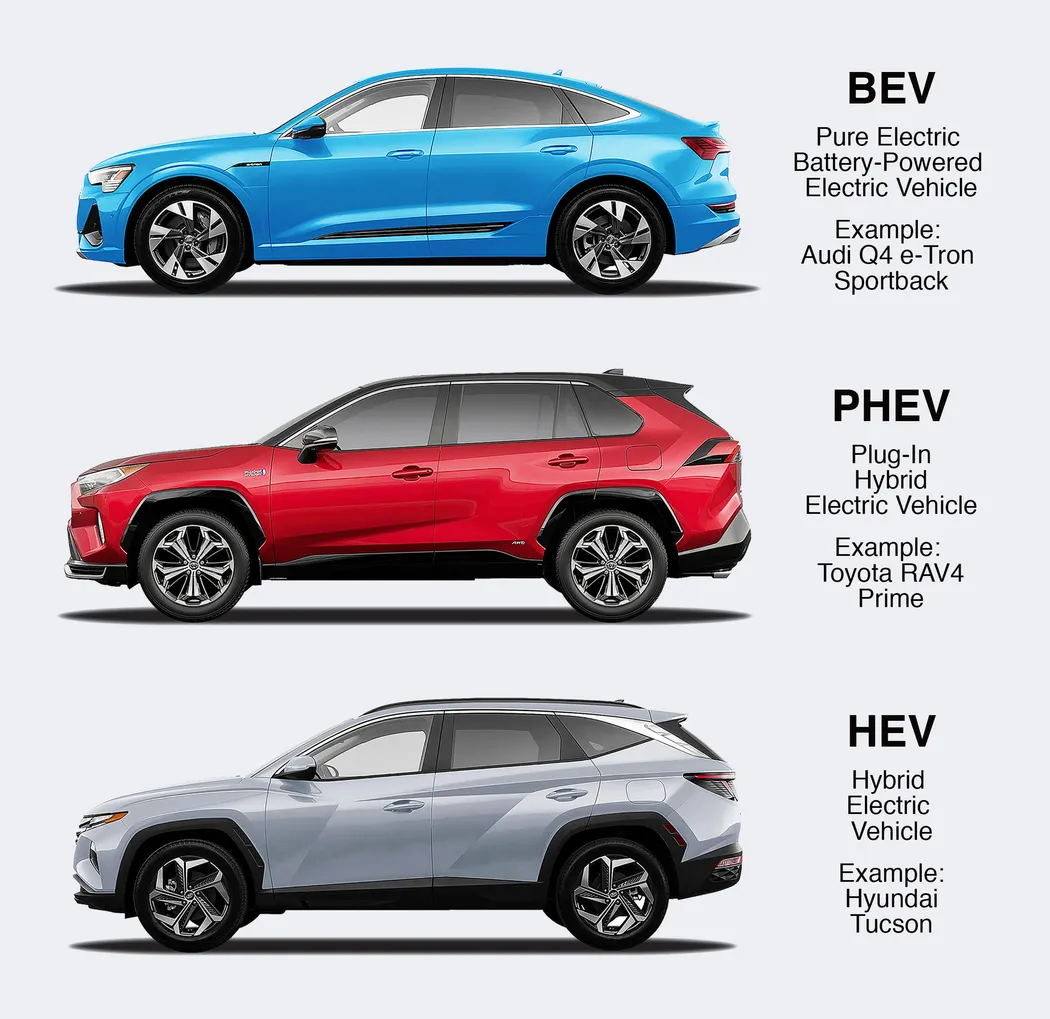Find The Best Deal
Current EV can get you the best deal on any of the vehicles below.
- PICK YOUR CAR (BELOW), FOLLOW THE EASY STEPS TO BUILD IT (3 MINUTES)
- HIT "SUBMIT" AND SEND IT TO CURRENT EV
- WE'LL SEND YOU THE LOWEST BIDS FROM MULTIPLE DEALERS
- YOUR CONTACT INFO IS KEPT CONFIDENTIAL - NO DEALER WILL CALL YOU
Available Models
If you don't see the car you’re looking for, call us at 310.477.2233 and ask about it.
*Information and statistics pertaining to cars on this page are subject to change.
Pure Electrics, Extended Range EVs, Plug-In Hybrids,Hybrids – What’s the difference?

A Pure Electric, or Battery-Powered Electric Vehicle (BEV) gets all its power from its batteries and electric motors. It contains no internal combustion engine (ICE). Its electric motor uses batteries that are recharged by plugging in to an electric power source (a wall socket or EV charger). An example is the Chevrolet Bolt.
An Extended Range EV (EREV) has an auxiliary power unit (called a range extender) which increases the EREV’s driving range. Most range extenders are small internal combustion engines that drive an electric generator furnishing the electric batteries and motor with electricity. An example is the Extended Range BMW i3.
A Plug-In Hybrid Electric Vehicle (PHEV) or Plug-In Hybrid, uses an electric motor and gas engine to operate. Its electric motor uses batteries that are recharged by plugging in to an electric power source (a wall socket or EV charger). The gas-powered motor can work together with the electric motor, or separately on its own, to power the powertrain. An example is the Kia Niro Plug-In Hybrid.
A Hybrid Electric Vehicle (HEV) is a type of hybrid vehicle and electric vehicle that combines a conventional internal combustion engine (ICE) propulsion system with an electric propulsion system (hybrid vehicle drivetrain). The presence of the electric powertrain is intended to achieve better fuel economy and performance. An example is the Toyota Prius Hybrid.

